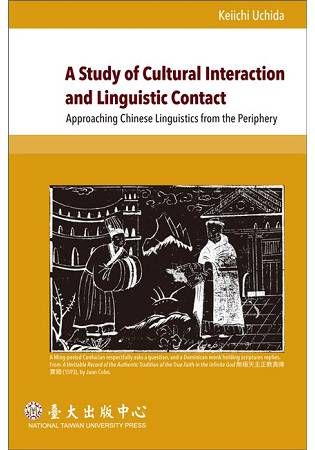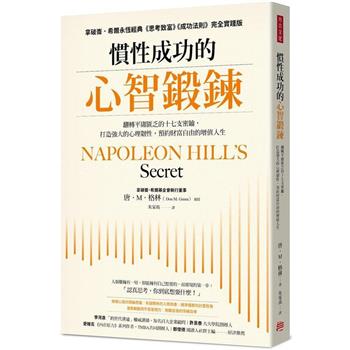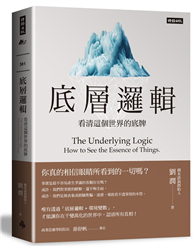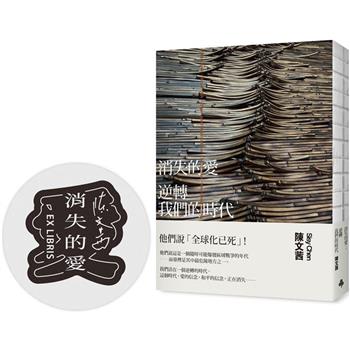| FindBook |
|
有 1 項符合
keiichi uchida的圖書 |
 |
$ 633 ~ 648 | A Study of Cultural Interaction and Linguistic Contact: Approaching Chinese Linguistics from the Periphery
作者:Keiichi Uchida / 譯者:Alan Thwaits 出版社:國立臺灣大學出版中心 出版日期:2017-04-13 語言:英文 規格:精裝 / 282頁 / 15.5 x 24 x 2.2 cm / 普通級/ 單色印刷 / 初版  共 4 筆 → 查價格、看圖書介紹 共 4 筆 → 查價格、看圖書介紹
|
|
|
圖書介紹 - 資料來源:博客來 評分:
圖書名稱:A Study of Cultural Interaction and Linguistic Contact: Approaching Chinese Linguistics from the Periphery
內容簡介
This study is an attempt to reorient the field of Chinese linguistics from the perspective of the new field of cultural interaction studies. The author, approaching Chinese linguistics from the periphery, examines such topics as the spread of Western learning and linguistic contact and Westerners’ study of Chinese: He studies materials produced by Western missionaries and Ryukyuan materials to show the validity and usefulness of Chinese linguistics in the field of cultural interaction studies. In addition, he looks at cultural interaction through illustrations.
作者介紹
作者簡介
Keiichi Uchida
Dr. Keiichi Uchida (内田慶市) is Director of the Institute of Oriental and Occidental Studies, Kansai University, Japan. His areas of specialization are Chinese linguistics and cultural interaction studies.
Keiichi Uchida
Dr. Keiichi Uchida (内田慶市) is Director of the Institute of Oriental and Occidental Studies, Kansai University, Japan. His areas of specialization are Chinese linguistics and cultural interaction studies.
目錄
Introduction: A Peripheral Approach to Chinese Linguistics as a Contribution to the Study of Cultural Interaction
Part I: Studies of Chinese in the Periphery
Chapter 1: The Value and Possibilities of Modern Western Studies of Chinese, with a Focus on Mandarin
Chapter 2: Modern Westerners’ Views of Chinese Style
Chapter 3: The Development of Modern Westerners’ Terms for Chinese Parts of Speech
Chapter 4: Morrison’s Grammar and Views on Translation
Chapter 5: The Grammar of Crawford’s Mandarin Grammar, a Milestone in Nineteenth-Century Studies of Chinese Grammar
Chapter 6: Chinese Studies of Grammar prior to Ma’s Guide to the Written Language: Bi Huazhen’s Division of Parts of Speech in Notes from Yanxu Cottage
Chapter 7: Thomas Wade’s Progressive Course
Chapter 8: Pidgin: A Feature of Contact between Cultures of Different Languages
Chapter 9: Wenyutang and Its Business Partners
Chapter 10: The Days of the Week in Modern Chinese
Chapter 11: The Chinese Bible Used by Robert Morrison: A Newly Discovered Manuscript of the New Testament Translated by Jean Basset
Part II: Modern Cultural Interaction between East and West as Seen from Illustrations
Chapter 12: “Zixingche”: The Chinese Word for Bicycle
Chapter 13: An 1890 Amusement Park and Its Roller Coaster (“Zixingche”)
Chapter 14: The Life of Christ, Sinicized
Chapter 15: The Origins of Chinese Comic Strips
Chapter 16: Aesop’s Fables in The Child’s Paper, from New Sources
Chapter 17: Left versus Right in Chinese Illustrations of the Colossus of Rhodes
Chapter 18: The Words for Portrait and Chemistry in China
Chapter 19: Bulletproof Vests, No Less
Chapter 20: The First Iron Man?
Chapter 21: Manchu and Mongolian Pamphlets
Chapter 22: Clock Towers: Notes on Expressing the Time in Modern Chinese
Chapter 23: The Arrival of X-Ray Technology in China
Bibliography of Major Works
Origins of the Essays
List of Figures
Part I: Studies of Chinese in the Periphery
Chapter 1: The Value and Possibilities of Modern Western Studies of Chinese, with a Focus on Mandarin
Chapter 2: Modern Westerners’ Views of Chinese Style
Chapter 3: The Development of Modern Westerners’ Terms for Chinese Parts of Speech
Chapter 4: Morrison’s Grammar and Views on Translation
Chapter 5: The Grammar of Crawford’s Mandarin Grammar, a Milestone in Nineteenth-Century Studies of Chinese Grammar
Chapter 6: Chinese Studies of Grammar prior to Ma’s Guide to the Written Language: Bi Huazhen’s Division of Parts of Speech in Notes from Yanxu Cottage
Chapter 7: Thomas Wade’s Progressive Course
Chapter 8: Pidgin: A Feature of Contact between Cultures of Different Languages
Chapter 9: Wenyutang and Its Business Partners
Chapter 10: The Days of the Week in Modern Chinese
Chapter 11: The Chinese Bible Used by Robert Morrison: A Newly Discovered Manuscript of the New Testament Translated by Jean Basset
Part II: Modern Cultural Interaction between East and West as Seen from Illustrations
Chapter 12: “Zixingche”: The Chinese Word for Bicycle
Chapter 13: An 1890 Amusement Park and Its Roller Coaster (“Zixingche”)
Chapter 14: The Life of Christ, Sinicized
Chapter 15: The Origins of Chinese Comic Strips
Chapter 16: Aesop’s Fables in The Child’s Paper, from New Sources
Chapter 17: Left versus Right in Chinese Illustrations of the Colossus of Rhodes
Chapter 18: The Words for Portrait and Chemistry in China
Chapter 19: Bulletproof Vests, No Less
Chapter 20: The First Iron Man?
Chapter 21: Manchu and Mongolian Pamphlets
Chapter 22: Clock Towers: Notes on Expressing the Time in Modern Chinese
Chapter 23: The Arrival of X-Ray Technology in China
Bibliography of Major Works
Origins of the Essays
List of Figures
序
序論
Introduction: A Peripheral Approach to Chinese Linguistics as a Contribution to the Study of Cultural Interaction
The notion of the studyof cultural interaction in East Asia is not yet well rooted in society, but the group to which I belong, the Institute for Cultural Interaction Studies at Kansai University (a 2007 Global Center of Excellence program of the Ministry of Education, Culture, Sports, Science, and Technology) seeks to establish this field of study as a new framework for studying East Asia. Our basic understanding of the content of this framework is as follows.
Traditionally, the study of cultural interaction, for instance, the study of the history of Sino-Japanese interaction, was conducted within a national framework involving two countries and in the various fields of study, such as linguistics, thought, ethnography, religion, literature, and history. Consequently, knowledge was compartmentally accumulated in separate journals and publications, with the result that there was a lack of understanding of the complete picture of cultural interaction. Our new framework for studying cultural interaction, in contrast, seeks to transcend nations and separate fields of study. It presupposes that East Asia is a complex cultural unit requiring us to look at the development, spread, transmission, and content of culture within the whole region, in order to clarify the total picture of East Asian cultural interaction from a multiperspective, comprehensive point of view.
And to establish our new framework of study, one of the methods we use is the peripheral approach. But as we are using the notion, “periphery” refers to more than the geographical periphery. The relationship of periphery and center can also be found in various fields of academic study, such as the field of Chinese linguistics. Moreover, the relation between periphery and center is not fixed; rather, the boundary between periphery and center is flexible and varies over time—a possibility that we must bear in mind.
This great effort at creating a framework for studying cultural interaction has, of course, just begun, and our present multidisciplinary frame of reference does not offer a single answer to the question of just what the field of cultural-interaction studies is. Going forward, we must engage in discussion to accumulate concrete results that can support a new framework for studying intercultural interaction. What this work seeks to offer is an example of a solution to this challenge from the perspective of the field of Chinese linguistics.
1 An Approach from the Periphery
When we look at only the center of a phenomenon, we often cannot grasp its true nature. The eye of a typhoon is calm, while the winds are raging on the periphery. Traditional sayings have put the matter well. In Japan we have the saying “It is dark at the base of the candlestick” 灯台下暗し, and also the saying “[In the game of go] the onlooker can see eight moves in advance”岡目八目. Moreover, the Chinese have the sayings “The go player is at a loss while the onlooker is clear” 當局者迷,旁觀者清and “One does not see the true face of Mt. Lu when one is on the mountain” 不識廬山真面目,只緣身在此山中.
The relation between periphery and center can be considered from various perspectives. One such perspective is that of Zhu Dexi 朱德熙, who speaks of “comparative contrasts”:
Q What are the special features of Chinese grammar? I have always been puzzledby this question. May I ask your opinion here?
A Special features become clear in the comparison. If there is no comparison, there are no special features. Hence, if you ask what the special features of Chinese grammar are, you first have to specify what language you are going to compare Chinese to. (1985, p. 2)
Yet today’s scholarly research is increasingly segmented, with the result that while scholars might be able to handle the minute details of some particular phenomenon, they are at a loss to present an overview of the whole. In the field of Chinese grammar as well, research on a particular phenomenon is becoming increasingly subtle. While this is progress of a sort, systematic discussions of the whole of Chinese grammar are being neglected. The situation is one where scholars delve directly into such matters as the acceptability of having了twice in a predicate, the nature of the progressive 在, the circumstances when 的is necessary and when it is not, and the distinction between a verbal complement and a conjoined adjective (details that admittedly need elucidating), while neglecting to explain such basic notions as those of a sentence, a subject, or a predicate. Even more important, such basic questions as what is language are omitted. Missing is a view of language, or even a view of the world, to exaggerate. Can this really be called progress?
Recently, interdisciplinary and extradisciplinary studies have become quite popular. Though this is to be expected, interdisciplinary studies cannot be the established paradigm from the start. After all, interdisciplinary studies are possible only after specialized fields of study have become established. We must remember that interdisciplinary and extradisciplinary studies not based on specialized fields of study lack roots.
In any case, for over ten years we have advocated this peripheral approach and have carried out research in Chinese linguistics based on this approach. Below I will again present my views as to the validity of this approach in linguistic research, and in particular, in research on grammar.
Introduction: A Peripheral Approach to Chinese Linguistics as a Contribution to the Study of Cultural Interaction
The notion of the studyof cultural interaction in East Asia is not yet well rooted in society, but the group to which I belong, the Institute for Cultural Interaction Studies at Kansai University (a 2007 Global Center of Excellence program of the Ministry of Education, Culture, Sports, Science, and Technology) seeks to establish this field of study as a new framework for studying East Asia. Our basic understanding of the content of this framework is as follows.
Traditionally, the study of cultural interaction, for instance, the study of the history of Sino-Japanese interaction, was conducted within a national framework involving two countries and in the various fields of study, such as linguistics, thought, ethnography, religion, literature, and history. Consequently, knowledge was compartmentally accumulated in separate journals and publications, with the result that there was a lack of understanding of the complete picture of cultural interaction. Our new framework for studying cultural interaction, in contrast, seeks to transcend nations and separate fields of study. It presupposes that East Asia is a complex cultural unit requiring us to look at the development, spread, transmission, and content of culture within the whole region, in order to clarify the total picture of East Asian cultural interaction from a multiperspective, comprehensive point of view.
And to establish our new framework of study, one of the methods we use is the peripheral approach. But as we are using the notion, “periphery” refers to more than the geographical periphery. The relationship of periphery and center can also be found in various fields of academic study, such as the field of Chinese linguistics. Moreover, the relation between periphery and center is not fixed; rather, the boundary between periphery and center is flexible and varies over time—a possibility that we must bear in mind.
This great effort at creating a framework for studying cultural interaction has, of course, just begun, and our present multidisciplinary frame of reference does not offer a single answer to the question of just what the field of cultural-interaction studies is. Going forward, we must engage in discussion to accumulate concrete results that can support a new framework for studying intercultural interaction. What this work seeks to offer is an example of a solution to this challenge from the perspective of the field of Chinese linguistics.
1 An Approach from the Periphery
When we look at only the center of a phenomenon, we often cannot grasp its true nature. The eye of a typhoon is calm, while the winds are raging on the periphery. Traditional sayings have put the matter well. In Japan we have the saying “It is dark at the base of the candlestick” 灯台下暗し, and also the saying “[In the game of go] the onlooker can see eight moves in advance”岡目八目. Moreover, the Chinese have the sayings “The go player is at a loss while the onlooker is clear” 當局者迷,旁觀者清and “One does not see the true face of Mt. Lu when one is on the mountain” 不識廬山真面目,只緣身在此山中.
The relation between periphery and center can be considered from various perspectives. One such perspective is that of Zhu Dexi 朱德熙, who speaks of “comparative contrasts”:
Q What are the special features of Chinese grammar? I have always been puzzledby this question. May I ask your opinion here?
A Special features become clear in the comparison. If there is no comparison, there are no special features. Hence, if you ask what the special features of Chinese grammar are, you first have to specify what language you are going to compare Chinese to. (1985, p. 2)
Yet today’s scholarly research is increasingly segmented, with the result that while scholars might be able to handle the minute details of some particular phenomenon, they are at a loss to present an overview of the whole. In the field of Chinese grammar as well, research on a particular phenomenon is becoming increasingly subtle. While this is progress of a sort, systematic discussions of the whole of Chinese grammar are being neglected. The situation is one where scholars delve directly into such matters as the acceptability of having了twice in a predicate, the nature of the progressive 在, the circumstances when 的is necessary and when it is not, and the distinction between a verbal complement and a conjoined adjective (details that admittedly need elucidating), while neglecting to explain such basic notions as those of a sentence, a subject, or a predicate. Even more important, such basic questions as what is language are omitted. Missing is a view of language, or even a view of the world, to exaggerate. Can this really be called progress?
Recently, interdisciplinary and extradisciplinary studies have become quite popular. Though this is to be expected, interdisciplinary studies cannot be the established paradigm from the start. After all, interdisciplinary studies are possible only after specialized fields of study have become established. We must remember that interdisciplinary and extradisciplinary studies not based on specialized fields of study lack roots.
In any case, for over ten years we have advocated this peripheral approach and have carried out research in Chinese linguistics based on this approach. Below I will again present my views as to the validity of this approach in linguistic research, and in particular, in research on grammar.
|











